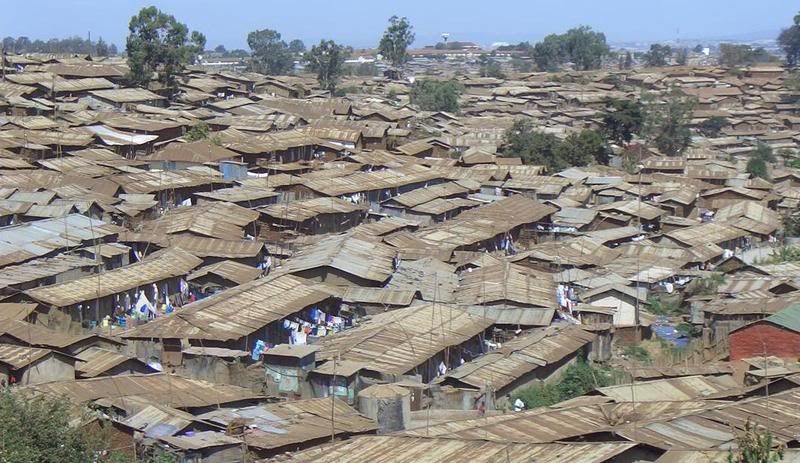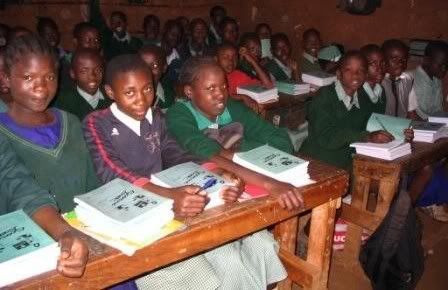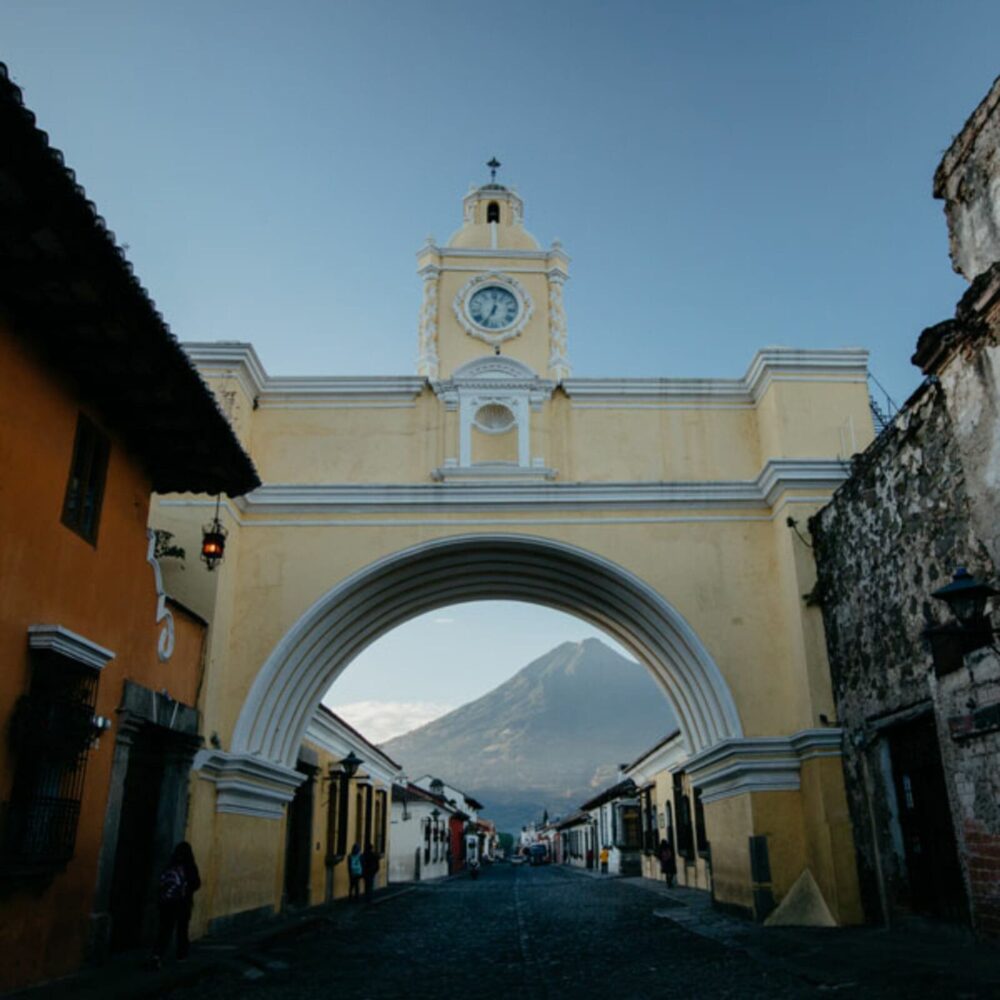A:LINK {Text-Decoration: none; Color: #daa520}
A:VISITED {Text-Decoration: none; Color: #b8860b}
A:HOVER {Text-Decoration: underline; Color: #b22222}
Kibera Overview
As Nairobi grew into a booming metropolis many people moved from their homes in the countryside to its outskirts seeking a better life. These shanty towns on the city borders morphed into slums as the number of people became more than the land could handle. Kibera Slums is one of the largest and oldest collections of these ‘informal settlements’ in Kenya. Located just outside of Nairobi, Kibera is home to approximately a million people and covers an area about the size of New York’s Central Park (2 square kilometers). |
Crowded Shanties of Kibera |
Kibera itself is divided into nine official villages, each with its own village elder. These villages are settled according to specific tribal affiliations creating division within the neighborhoods. Life in the villages is dangerous. Tribal gangs and wild dogs roam the streets at night rendering it unsafe to be out after dark. Many take justice into their own hands making violence a part of everyday life and death a common occurrence.
The Kibera “River” | Living conditions within the slum are rough at best. The average family (5-10 people) lives in a wooden frame house that is 9 feet by 9 feet, with mud walls and floors, and a corrugated tin roof. Their source of water is a costly, contaminated stand pipe several blocks away and there is no electricity. Trash pickup is not offered within much of Kibera and garbage is strewn everywhere. Outbreaks of disease ravage the villages with so little space between families. Lack of sufficient personal and public restrooms contribute to unsanitary conditions and the open sewer systems only add to the problem. |
Children form the heart of Kibera, about 50% of the slum’s population. Some are sent by parents to Nairobi to help earn money for the family, others are simply searching for a better life and many are orphans who have nowhere else to go. Resourcefulness comes as a result of hard living; throughout the streets of the slum, children are seen scavenging garbage piles for items to recycle, sell or to create makeshift play toys. Living with relatives, guardians or on the streets many do not have the expectation of attending school.
Families within Kibera must make judgments about the quality and relevance of schooling versus the ever present need to earn a living. For many the reality of school is simply unattainable. Countless children drop out early because of the strain on family finances. The GNI for all of Kenya is $530 but the majority of slum dwellers live on less than one dollar per day making survival almost impossible. Sending one child to school can cost up to $75 per year, leaving the family with little to survive on. |
Standard 7 at NAS |
| History Home | Beginnings | Kenya | Kibera | Future |











